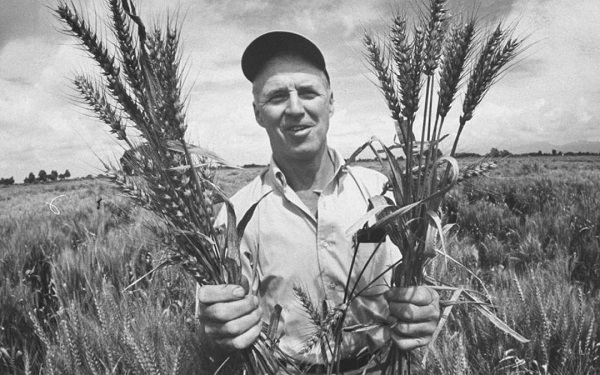Green Revolution is the name given to the set of technological initiatives that transformed agricultural practices and drastically increased food production in the world.
The Green Revolution began in the 1950s in Mexico. Its precursor was the agronomist Norman Borlaug, who developed chemical techniques capable of give greater resistance to corn and wheat crops, in addition to optimizing production methods agricultural.
The methods introduced by Borlaug were so effective that in a few years Mexico went from an importer to an exporter of wheat. Thus, other underdeveloped countries, especially India, adopted the new practices, which quickly became popular in the rest of the world.
In 1970, Norman Borlaug received the Nobel Peace Prize, as his work had great humanitarian consequences.
How did the Green Revolution start?
In 1944, Norman Borlaug moved to Mexico to work as a geneticist and phytopathologist. As an initial challenge, he tackled the so-called “stem rust”, a fungus that affected wheat crops, killing the plants and severely reducing production.
Fungus Puccinia granimi, known as "Thatch Rust".
Borlaug managed to genetically cross two wheat varieties: one resistant to the fungus and another adapted to local conditions in Mexico. In just three years, Borlaug selected the successful crosses, adopted them as a model and eliminated the fungus, thus increasing productivity.
However, in addition to disease resistance, the new wheat responded very effectively to fertilizers, which resulted in large and tall plants, which ended up breaking with the weight of the grains.

Example of a plant that did not support its own weight. The phenomenon is known in agriculture as "lodging".
In 1953, through new genetic crossings, Borlaug obtained the so-called “half-dwarf wheat”. This new wheat had shorter and stronger stalks, able to support the weight of the grains, maintaining disease resistance and high yield. This new species of wheat became known as “Miracle Seeds” and is, to this day, the most widely cultivated type of wheat in the world.

Norman Borlaug holding the new species of half-dwarf wheat.
Thus, with the extreme increase in wheat production in Mexico, the Green Revolution began, which in a few years transformed the agricultural paradigm around the world.
Foundations of the Green Revolution
The Green Revolution was heavily based on elements such as:
- seed genetic modification
- production mechanization
- intensive use of chemical products (fertilizers and pesticides)
- introduction of new planting, irrigation and harvesting technologies
- mass production of the same products as a way to optimize production
Disadvantages of the Green Revolution
Although the Green Revolution was extremely beneficial in its first decades, its negative aspects are easily observable, such as:
- very high level of water use to support its methods
- high dependence on technology from developed countries
- reduction of genetic diversity (given that the priority is to cultivate homogeneous products to optimize production and obtain greater profit)
- questionable sustainability
- high level of environmental degradation
- increased concentration of income
Green Revolution in Brazil
Brazil adopted the methods of the Green Revolution in the late 1960s, resulting in the period called the “Economic Miracle”. At the time, the country became a large-scale producer and began to export food, especially soy.
Objective not achieved
Norman Borlaug worked in Mexico in partnership with the Rockefeller Foundation, which had as the company's slogan the end of world hunger. Borlaug's work is estimated to have saved a billion people from starvation, earning him several honors.
However, studies show that the Green Revolution is closely linked to the uncontrolled increase in the birth rate in the world, especially in underdeveloped countries.
Thus, over time, the demographic increase has outstripped the increase in food production. Today, the number of people suffering from hunger is greater than the number of people in this situation before the Green Revolution.
See too:
- Biotechnology
